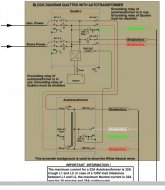You saw 2.5 year payback for a system with lifespan several times that? What utility rate per kWh and what battery cost?
My TOU rates are $0.15, $0.30, $0.45/kWh. Used to be (with other rates), peak was Noon to 6:00 PM so I could be a net producer. Now 4:00 to 9:00 PM, not much PV production available. My area of the country is expensive. Elsewhere, electricity rates are a fraction of that.
With $0.30 spread and battery costing $0.20/kWh, battery system costing $0.30, can't win.
Even if no net metering, better to curtail PV production for no export than to store power.
Some people have to pay "demand charge" based on peak draw. If infrequent, battery could help there. But I think better to just shut off loads to reduce peak draw (maybe fill in valley during different hour). Or over-panel more.
Some commercial rates may reach $0.60 or $1.00, so more cost effective.
Standby generators are another option. I looked at a small one, decided the labor for oil changes was worth more than the power produced. Trukinbear posted his costs to run a diesel generator. Cost per kWh was higher than my top-tier rates. So worthwhile for some purposes, but not to offset grid consumption.
I think many people will invest in battery systems thinking it will save them money, but it will cost them more in the long run.
The primary purpose of my batteries is to power the island grid so grid-tie PV inverters have somebody to play with. During blackouts, I can run A/C an everything else direct off PV. At night, battery can barely keep my several refrigerators and other loads running until dawn. I should set up load-shed of those at night when grid is down. Could have 1/4 the battery in that case. But my 20 kWh battery is reasonable to support the entire house during brief times (minutes) when GT inverters drop off line, and to suck down their output for a few seconds during load-dump, while frequency-shift occurs.
In my case none of that is cost-effective, just as luxury and convenience.
A small system could run phone and internet/laptops.
A generator run a few hours per day would chill the refrigerators and freezers.




